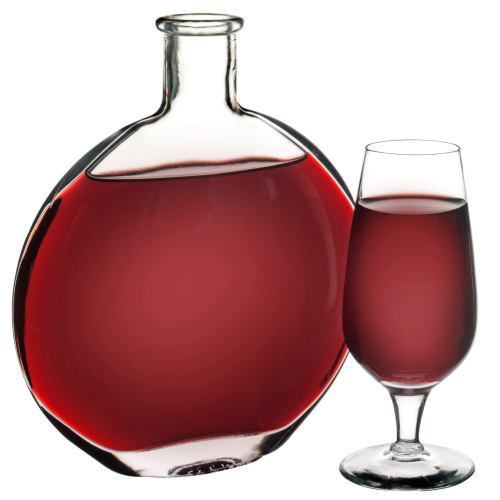In the world of wine, Port and sweet wines hold a special place for their distinct flavors, unparalleled richness, and intricate production process. These delectable libations have a long, storied history that has spanned centuries, and they continue to captivate connoisseurs and casual drinkers alike. This article will take you on a journey through the origins, production, and storage of these extraordinary wines, revealing the secrets behind their enduring allure.
I. A Taste of History: The Origins of Port & Sweet Wines
Port wine, named after the coastal city of Porto in Portugal, traces its roots back to the late 17th century. British merchants, facing political tensions and dwindling supplies of French wine, turned to Portugal as an alternative source. They soon discovered the Douro Valley, a region blessed with a unique terroir that gave birth to the now-iconic Port wine.
Sweet wines, on the other hand, boast a more diverse origin story. From the sun-kissed vineyards of Sauternes in France to the volcanic soils of Pantelleria in Italy, various regions around the world have been producing their own versions of these delectable treasures for centuries. The common thread that ties these wines together is their shared characteristic of elevated sugar content, which imparts a distinctive sweetness and viscosity to the final product.
II. The Art of Fermentation: Fortification and Noble Rot
What sets Port and sweet wines apart from their drier counterparts is the unique fermentation process that gives them their signature flavor profiles. In the case of Port wine, fermentation is halted through the addition of neutral grape spirit, typically brandy. This fortification process stops the conversion of sugar to alcohol, leaving a higher residual sugar content and resulting in a sweeter, more robust wine.
Many sweet wines owe their distinct flavors to a phenomenon known as noble rot, or "Botrytis cinerea." This fungal infection affects ripe grapes, causing them to shrivel and concentrate their sugars. Winemakers carefully harvest these botrytized grapes, pressing them to release a rich, concentrated juice that undergoes fermentation to create the luscious, honeyed elixirs we know and love.
III. A Symphony of Flavors: The Many Faces of Port & Sweet Wines
Port and sweet wines are as diverse as the regions that produce them, with each offering its own unique sensory experience. From the dark, brooding intensity of a Vintage Port to the amber elegance of a Tokaji Aszú, these wines exhibit an array of flavors and textures that captivate the palate.
Among the most revered Port styles are Vintage, Late Bottled Vintage (LBV), Tawny, and White Port. Each has its own aging process and flavor profile, with Vintage Ports maturing in the bottle, while Tawny Ports develop their nutty, caramel nuances through extended aging in oak barrels.
Sweet wines, too, come in various styles, such as the golden-hued Sauternes of France, the opulent Trockenbeerenauslese from Germany, and the ethereal Vin Santo from Italy. These wines often display flavors of dried apricots, honey, and candied citrus, balanced by bright acidity that keeps them from becoming cloying.
IV. Preserving Liquid Gold: The Art of Storing Port & Sweet Wines
The proper storage of Port and sweet wines is essential to preserve their quality and allow them to evolve gracefully over time. These wines should be kept in a cool, dark environment, with temperatures ideally ranging between 55 and 65°F (13 and 18°C) and humidity levels of 60 to 70 percent.
Bottles
of Port and sweet wines should be stored horizontally to ensure that the cork remains moist and maintains a tight seal, preventing oxidation. For Vintage Ports, this also allows any sediment to settle evenly along the side of the bottle, making it easier to decant when the time comes to enjoy the wine.
When it comes to aging, Port and sweet wines have varying potential depending on the style and quality. Some wines, such as Vintage Ports and high-quality Sauternes, can age gracefully for decades, developing complex tertiary aromas and flavors. Others, like Ruby Ports and lighter-bodied sweet wines, are meant to be enjoyed within a few years of bottling, as they offer vibrant fruitiness and freshness.
V. The Art of Decanting and Serving: A Ritual to Savor
The experience of enjoying Port and sweet wines goes beyond their taste alone; it is a ritual that engages all the senses. For Vintage Ports and older sweet wines with sediment, decanting becomes an essential step. Carefully pour the wine into a decanter, leaving the sediment behind in the bottle, and allow it to breathe for an hour or two before serving.
Serve Port and sweet wines in smaller glasses than those used for dry wines, as their intense flavors and aromas can be overwhelming in larger quantities. The ideal serving temperature varies by style, with most Ports and red sweet wines best enjoyed between 60 and 65°F (16 and 18°C), while white and late-harvest sweet wines shine at slightly cooler temperatures, around 50 to 55°F (10 to 13°C).
Conclusion
The world of Port and sweet wines is one of unparalleled depth and diversity, with each bottle offering a window into the rich history and skilled craftsmanship behind its creation. From their storied origins to the intricate production methods and careful storage techniques, these wines are a testament to the artistry and passion of the winemakers who bring them to life. To explore these alluring elixirs is to embark on a sensory journey that spans centuries and continents, delighting the palate and nourishing the soul.







